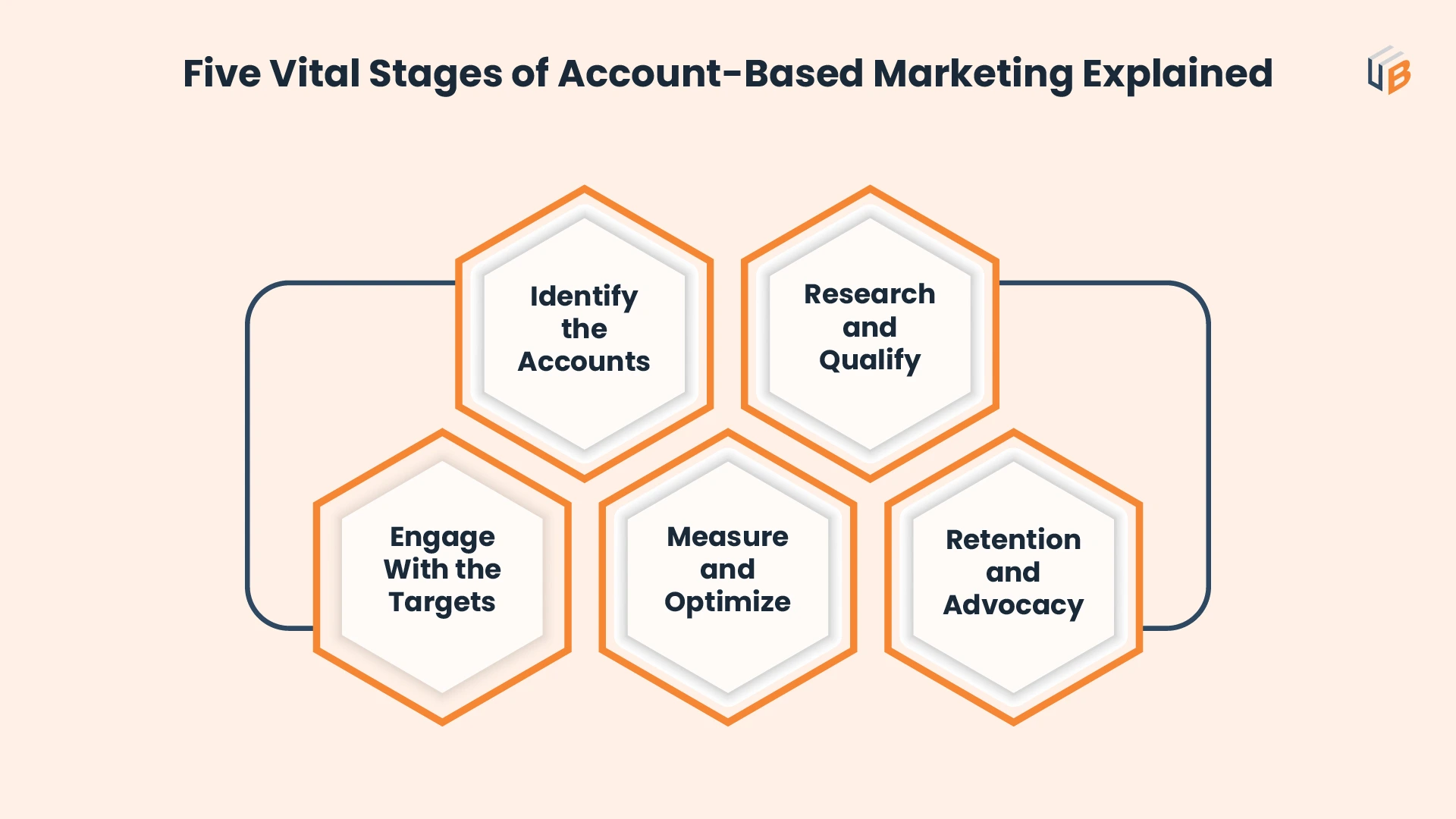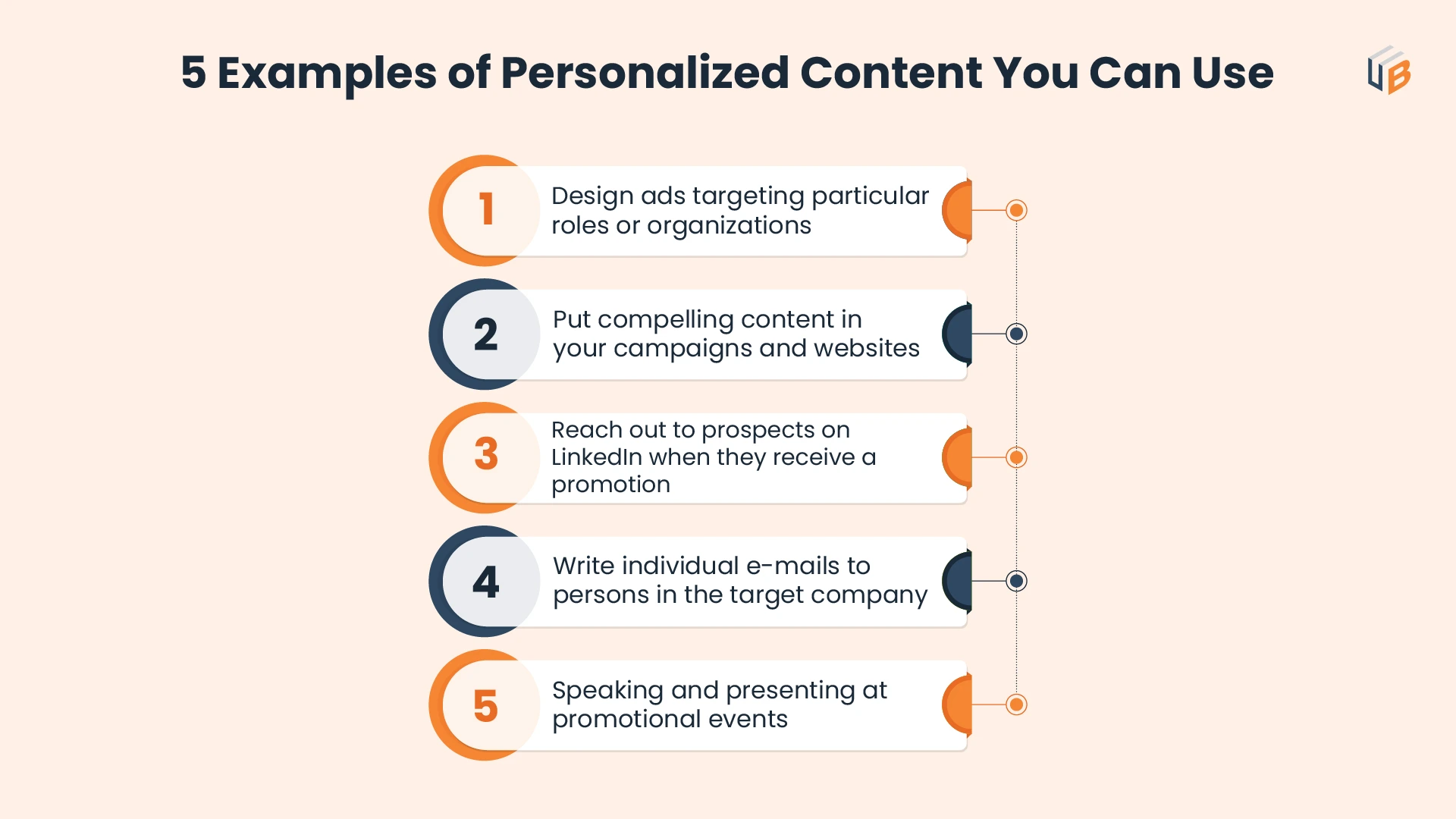
As companies are starting to focus on quality over quantity for their leads, account-based marketing is taking center stage. With it, marketers are identifying the best client profiles and targeting them. Unlike traditional lead generation, there’s a lot that goes on in ABM. More specifically, there are several stages of account-based marketing that you need to go through.
Now, these stages are obviously not suited for targeting a larger segment. They also need more concentrated resources than any other demand generation strategy. Some other prerequisites include seamless coordination between your marketing, sales, and customer success teams. Moreover, you need your entire team to be on the same page about your clients. That’s where the first of a total of 5 stages of account-based marketing begins.
5 Stages of Account-Based Marketing – From Identifying Ideal Customers to Conversion

1. Identify the Accounts You Wish to Target
The first stage of account-based marketing is all about getting to know who your ideal customers are and targeting them. To get started, you can form an ideal customer profile that can help you identify the target accounts.
An ICP will outline the traits of your perfect customer who will require the services you provide. It will define the problem you are solving for the customer, align the product or services with the client’s needs, and recognize the upgrades and changes your product or services may need in the future.
You can also select prospects based on deal acceleration opportunities. Choose the companies linked with the largest active deals. Select prospects with an intention to buy. Also, ensure that the marketing and sales team agree with the reason you prefer the target company.
Once you have your target accounts locked in, focus on identifying key decision-makers in it. These are the actual profiles you’ll be targeting. Additionally, you can also use tools like email lists and CRM to identify all possible prospects.
2. Research and Qualify the Accounts
Once you made a list of target accounts, research their pain points and needs and also understand what level they are in the customer journey. You can use LinkedIn or the prospect company’s website to gather contact details. Try to find the contact information of employees or decision-makers. If you have the data ask your CRM team to see if these prospects have decision-making power.
Try to maximize efforts in finding ABM data that’ll give you enough information to judge the chances of conversion. During this stage of account-based marketing, you also need to rank all your selected target accounts. This way, you can prioritize deals that are lucrative and easy to convert.
3. Engage With the Target Account’s Decision-Makers
In the third stage of account-based marketing, you have to create personalized content and messages to engage with your prospects. Through direct conversation, you build a relationship with the decision-makers. One thing to keep in mind is that you need to be respectful of their time and provide solutions to their pain points.
Understand what they are looking for and provide complete information fitting their needs.
In addition to this, these prospects get a lot of marketing content, so you will need personalized content. Depending on where your audience is you can deliver the content using account-based marketing strategies like direct mail, targeted PPC ads, LinkedIn advertising, and email marketing.

4. Measure and Optimize Results of ABM Campaigns
Measuring your strategy result is one of the most crucial stages of account-based marketing, as it recognizes patterns and scope for improvement. To measure the success of your strategy, you can use a few metrics like:
- Engagement rate: It shows you the response your marketing is getting from your target audience. A good engagement rate suggests that your strategy is working.
-
Win rates: It shows the quality of prospects you are choosing and how optimally the ABM strategy is working. When you select targets who have greater chances of closing your win rates will be higher.
-
Customer lifetime value: It is the total amount spent by a client on your product or services during the entire course of the relationship. Deal size is a very important factor in B2B ABM, making this a key metric to follow.
Other metrics that you can consider are influenced pipeline, open rates, customer acquisition cost, click-through rates, cross-sells and upsells, and annual contract values.
5. Focus on Retention and Advocacy
Once they become your client, the next stage of account-based marketing is to expand and retain. By providing excellent client experience, you create loyalty and they stay with you for longer tenure. You get additional benefits as they may become your advocates and refer or promote you in their network. As per the stats, 86% of customers will recommend your brand to friends and family while 66% will write a positive online review.
The clients become your advocates when you create a positive impression in every interaction you hold with them. Client retention and advocacy bring you more clients and generate a higher ROI, making your ABM strategy a success.

Dos and Don’ts of Account-Based Marketing
The stages of account-based marketing are effective when you use precise planning and have access to direct communication with your prospects. However, a successful account-based strategy has certain dos and don’ts. Here are the dos and don’ts you can keep in mind while applying the steps of account-based marketing.
Dos
-
Use a continuous step-down approach: When you are in the process of identifying the prospects, start with a large number and then set a criteria. Ideally, you can begin by identifying the industry your services are most required in or the industry you want to target.
-
Talk to the correct person and take notes: When gathering relevant information while researching or talking to the prospect inquire about who within the enterprise makes all the decisions relating to the service you provide. You can check a company’s website to understand its leadership team or people in authority.
-
Give prospects a reason to respond: If you are putting in all the effort and still not getting a response from your prospects, give them a concrete reason to get in touch. You can inform them about a limited-period discount that is authorized only for you by the senior management. Try emphasizing on the part that the offer stays for a shorter period.
Don’ts
-
Avoid getting restrictive: You should prefer focusing on a specific group of prospects but that shouldn’t be your only focus. You can make categories based on the research.
-
Don’t make a call to the receptionist: Since you know the person who makes all the decisions relating to the services you provide, reach out to them directly. You can communicate with them specifically instead of talking to the receptionist.
-
Don’t sound intrusive: When contacting a prospect, you need to show that you are well-informed about them. You can add certain information about the company that is accessible publicly.
Learn More About Account-Based Marketing
The 5 stages of account-based marketing that we discussed were broad and it gets much deeper than that. If you want to succeed with ABM, you need to understand what it is and how to best implement it to acquire your best prospective clients. To do that, read our Definitive Guide to Account-Based Marketing.
Our blog
Latest blog posts
Tool and strategies modern teams need to help their companies grow.

In this article, we’ll explore how AI-driven content, AI lead scoring, and AI-drive...

Marketers often confuse drips vs nurtures, but each plays a distinct role in B2B emai...

This article explores the key differences between enterprise sales vs SMB sales, high...







